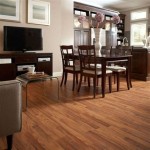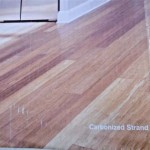Oak Flooring Wall Colors: Creating a Harmonious Interior Space
Oak flooring remains a consistently popular choice for homeowners seeking durability, warmth, and timeless appeal. Its natural beauty, characterized by distinct grain patterns and inherent variations in color, provides a classic foundation for a variety of interior design styles. However, selecting the right wall color to complement oak flooring is crucial in achieving a cohesive and aesthetically pleasing space. The interplay between the floor and wall colors significantly impacts the overall mood, perceived size, and visual harmony of a room. Therefore, careful consideration must be given to the undertones and inherent characteristics of the oak flooring before making a final decision.
Understanding the specific type of oak flooring is the first step in determining the optimal wall color palette. Oak flooring is generally available in two primary varieties: red oak and white oak. Red oak, as its name suggests, possesses warm, reddish undertones. White oak, on the other hand, exhibits cooler, more neutral tones with subtle hints of gray or beige. Recognizing these fundamental differences will guide the selection process and prevent potential color clashes. Furthermore, the finish applied to the oak flooring, whether a natural oil, a polyurethane sealant, or a stain, will further influence its overall color and should be factored into the equation.
Understanding Oak Undertones and Color Temperature
A basic understanding of color theory is essential when selecting wall colors to complement oak flooring. Color theory revolves around the concepts of color temperature (warm vs. cool) and undertones. Warm colors, such as reds, oranges, and yellows, tend to evoke feelings of energy and excitement, while cool colors, such as blues, greens, and purples, typically create a sense of calm and serenity. Undertones are the subtle hues that lie beneath the surface color. Recognizing these undertones in the oak flooring is crucial for selecting wall colors that either harmonize or create a deliberate contrast.
For red oak flooring, which possesses warm, reddish undertones, complementary wall colors often include warm neutrals such as creams, beiges, and taupes. These colors create a cohesive and inviting atmosphere, enhancing the natural warmth of the wood. Alternatively, homeowners seeking a bolder look may opt for cool colors such as muted greens or blues to create a striking contrast. However, it is important to avoid excessively saturated or bright cool colors, as they may clash with the warm undertones of the red oak, resulting in a visually jarring effect. The key is to find a balance that complements the flooring without overwhelming it.
White oak flooring, with its cooler, more neutral undertones, offers greater flexibility in terms of wall color selection. It pairs well with a wide range of both warm and cool colors. Warm neutrals, such as light grays, greiges (a blend of gray and beige), and soft yellows, create a sophisticated and inviting ambiance. Cool colors, such as blues, greens, and purples, also work exceptionally well, creating a sense of calm and tranquility. Because white oak is more neutral than red oak, bolder shades can be used without fear of clashing. The key is to consider the overall desired mood and aesthetic when making a final decision.
The amount of natural light in a room also plays a significant role in how wall colors appear. In rooms with ample natural light, darker colors may appear brighter and more vibrant, while lighter colors may seem washed out. Conversely, in rooms with limited natural light, lighter colors can help to brighten the space, while darker colors may make it feel smaller and more enclosed. Therefore, it is essential to test paint samples in the actual room before committing to a final color selection. Observe how the colors appear at different times of day and under different lighting conditions to ensure that they complement the oak flooring and create the desired atmosphere.
Neutral Wall Colors: A Safe and Versatile Choice
Neutral wall colors, such as whites, creams, beiges, grays, and greiges, represent a safe and versatile option for complementing oak flooring. These colors provide a neutral backdrop that allows the natural beauty of the wood to shine through. They also offer a high degree of flexibility, allowing for the incorporation of a variety of furniture and décor styles. Furthermore, neutral wall colors tend to be timeless, ensuring that the space remains stylish and current for years to come.
Within the realm of neutral wall colors, there is a wide range of shades and tones to choose from. For red oak flooring, warm neutrals such as creams, beiges, and taupes are often preferred. These colors enhance the warmth of the wood and create a cozy and inviting atmosphere. Off-whites with subtle yellow or peach undertones can also work well, adding a touch of warmth without being overly saturated. Cool grays, particularly those with warm undertones, can also be used to create a sophisticated and contemporary look. However, it is important to avoid grays that are too cool or bluish, as they may clash with the warm undertones of the red oak.
For white oak flooring, a wider range of neutral wall colors can be considered. Light grays, greiges, and soft whites create a clean and modern aesthetic. Cool grays with subtle blue or green undertones can also work well, creating a sense of calm and tranquility. Warm neutrals, such as creams and beiges, can also be used to create a more traditional and inviting atmosphere. The key is to choose a neutral color that complements the overall style of the room and enhances the natural beauty of the oak flooring.
To add visual interest to a neutral color scheme, consider incorporating texture through the use of different paint finishes, such as matte, eggshell, or satin. Matte finishes tend to absorb light, creating a soft and velvety appearance, while eggshell and satin finishes reflect light, adding a subtle sheen. Furthermore, consider incorporating accents of color through the use of artwork, accessories, and furniture. These accents can add pops of personality and prevent the space from feeling too monotonous.
Beyond Neutrals: Exploring Color Options with Oak Flooring
While neutral wall colors represent a safe and versatile choice, homeowners may also wish to explore the use of bolder colors to create a more dramatic and personalized space. When selecting colors beyond neutrals, it is crucial to carefully consider the undertones of the oak flooring and the overall desired mood. With careful planning and consideration, it is possible to create a stunning and harmonious interior space that showcases the beauty of the oak flooring.
For red oak flooring, muted greens and blues can provide a striking contrast to the warm undertones of the wood. However, it is important to avoid excessively saturated or bright shades, as they may clash with the flooring. Instead, opt for softer, more muted tones, such as sage green, olive green, or teal blue. These colors can create a sense of calm and serenity, while also highlighting the warmth of the red oak. Earthy tones, such as terracotta or rust, can also work well, creating a warm and inviting atmosphere that complements the natural beauty of the wood. However, it is important to use these colors sparingly, as they can be overwhelming if used on all four walls.
For white oak flooring, a wider range of colors can be considered, including bolder shades of blue, green, purple, and even red. The key is to choose colors that complement the overall style of the room and enhance the natural beauty of the wood. For example, a deep navy blue can create a sophisticated and elegant atmosphere, while a vibrant emerald green can add a touch of energy and excitement. Purple hues, such as lavender or eggplant, can create a sense of drama and luxury. Even a bold red can be used to create a striking and memorable space, particularly when paired with white oak flooring that has a cooler, more neutral tone.
When using bolder colors, it is important to consider the size and layout of the room. In smaller rooms, it is best to use lighter shades to avoid making the space feel cramped or enclosed. In larger rooms, darker shades can be used to create a sense of intimacy and warmth. Furthermore, it is important to balance the use of bold colors with neutral accents. For example, consider painting one wall a bold color and leaving the remaining walls neutral. This can create a focal point without overwhelming the space. Alternatively, consider using bold colors in accent pieces, such as artwork, accessories, and furniture.
Ultimately, the best wall color for oak flooring is a matter of personal preference and the overall desired aesthetic. By understanding the undertones of the oak flooring, considering the amount of natural light in the room, and experimenting with different color combinations, homeowners can create a stunning and harmonious interior space that showcases the beauty of their oak floors.

The 20 Best Neutral Paint Colors To Go With Oak Or Wood Part 4 For Living Room Floor

How To Match Wall Colors With Wood Floors Improovy

Trendy Wall Color And Floor Combinations Five Star Painting

Best Wall Colors To Go With Hardwood Floors

What Wall Colors Work Best With Hardwood Floors Rw Supply Design

How To Match Wall Paint Colors With Wood Floor Empire Today Blog

Mulling Over Wood Floor Colors Living Room Wall Paint For

How To Match Wall Colour With Wood Floor A Beginner S Guide

What Wall Colors Work Best With Hardwood Floors Rw Supply Design
Best Paint Colors That Go With Honey Oak Wood Carla Bast Design
Related Posts








